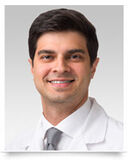Heart Surgery Innovations: Bicuspid Aortic Valve & Aortic Aneurysm Treatment
Written By: Adam Pick, Patient Advocate, Author & Website Founder
Medical Expert: Eric Roselli, MD, Chief of Adult Cardiac Surgery, Cleveland Clinic
Page Last Updated: May 13, 2025
Bicuspid aortic valve disease is a serious and common form of heart disease that is under-diagnosed and under-treated.
Also... Did you know that 40% of bicuspid aortic valve patients are at risk for developing a life-threatening aortic aneurysm? That's right. There is a distinct relationship between malformed aortic valves and aortic aneurysms that elevates patient risk.
I wanted to learn more about the latest surgical techniques used to treat these cardiac disorders. For that reason, I met with Dr. Eric Roselli, the Chief of Adult Cardiac Surgery and the Director of the Aorta Center at the Cleveland Clinic. To see the highlights of our discussion, please click the play button below.
There were so many great points that I documented during Dr. Roselli's interview. I jotted down the following:
- The concept of the "Spectrum of Bicuspidness" in which the variation of a malformed aortic valve may require different forms of treatment or no treatment at all.
- The potential of a normal functioning valve to cause an aortic aneurysm.
- The thoughtful approach of tailoring a "personalized treatment plan" for each patient that may require bicuspid therapy and/or aneurysm repair.
- The use of a Modified David Procedure to salvage and re-implant an aortic valve following an aneurysm repair.
Many Thanks to Dr. Roselli & The Cleveland Clinic
On behalf of our community, I want to extend a mighty "Thank You!" to Dr. Eric Roselli for sharing his clinical experiences and research with our community!
I also want to thank Dr. Roselli and the entire team at the Cleveland Clinic for taking such great care of our patients!
Keep Learning!
To educate and empower you, here is more helpful information about bicuspid aortic valves and aortic aneurysms:
- Dr. Roselli's Patient Success Story: Ari Mintzer
- Surgeon Q&A: Valve-Sparing Root Replacement for Bicuspid Aortic Valve Patients
Keep on tickin,
Adam
P.S For the deaf and hard of hearing members of our community, here is a video transcript for your review.
For the hearing impaired members of our community, a written transcript of the video with Dr. Roselli is provided below.
No one wants to hear that they have to have heart surgery. But, with modern technology and the experience that we’ve gained over the last several decades, we can perform these operations incredibly safely.
I’m Eric Roselli. I’m the Chief of the Section of Adult Cardiac Surgery and the Surgical Director of the Aorta Center at the Cleveland Clinic. I’ve performed over 3,500 operations. The bulk of the work that I do involves the thoracic aorta, which is the main blood vessel in the chest, and the valves within the heart. Everything in cardiac surgery excited me when I was in my training.
I’ve been really fortunate to be in the right place at the right time at the Cleveland Clinic. I was also given the opportunity to design my own specialty training in what we call hybrid aortic surgery, which means a combination of surgical and endovascular catheter-based techniques.
I think we have to step back and think about the disease that involve the aortic valve. Close to 2% of the population is born with what we call a bicuspid valve.
There’s a spectrum of what I call “bicuspidness” where the valve malformed just a little bit in some folks and just a little bit more differently in other folks.
Sometimes it doesn’t become a serious problem that requires an operation ever. Sometimes it happens when you’re 50 and sometimes when you’re 20 and sometimes when you’re an infant.
The majority of bicuspid valves are not symptomatic at all. They may be detected from a good physician who hears a murmur. What a murmur means is that there’s a different sound. You’ll get a different sound if the blood is flowing a little differently across your valve. If you get some turbulent blood flow, a good physician can hear that. If we hear a murmur in a valve, then the next thing to do with modern imaging is to get a look at it. We can get a look at it with an ultrasound or an echocardiogram to see exactly what that valve looks like.
Something that’s unique to a patient with a bicuspid aortic valve problem is that at least 40% and maybe more are prone to what we call an aneurysm. An aneurysm means that vessel is stretched out or dilated or enlarged. It’s important because even if your valve was working okay with a bicuspid valve, you can have that vessel grow into an aneurysm that can put you at risk for having it rupture or dissect. Those are life threatening things.
When we find that someone has a bicuspid valve, whether it’s symptomatic or not, it’s important to remember that association with aneurysm needs to be studied and characterized in that patient and a plan needs to be put in place about how that’s going to managed as well. When we make decisions about how to treat a particular problem in a patient, I think we have to think about tailoring that therapy to that patient’s needs.
There’s a full spectrum of different options that we have today from the surgical standpoint when someone comes to us with an aneurysm of their aorta with or without valve dysfunction. That extends everything from an isolated valve replacement to a valve plus a partial aortic reconstruction to a complete reconstruction of the aorta with a repair and salvage of the valve.
A Modified David’s Procedure is technically an aortic root replacement with preservation of the aortic valve. Specifically it’s a valve-preserving root replacement with re-implantation of the valve.
The more experience that your team you’re working with has with each of those various options, the better they can tailor that therapy to what your needs are as a patient.
My advice to any patient who is given the diagnosis of an aortic aneurysm or valve disease is to learn what you can about it. Go to a center and find physicians who are willing to teach you about what’s going on so you can make a shared decision about what’s best for you.





